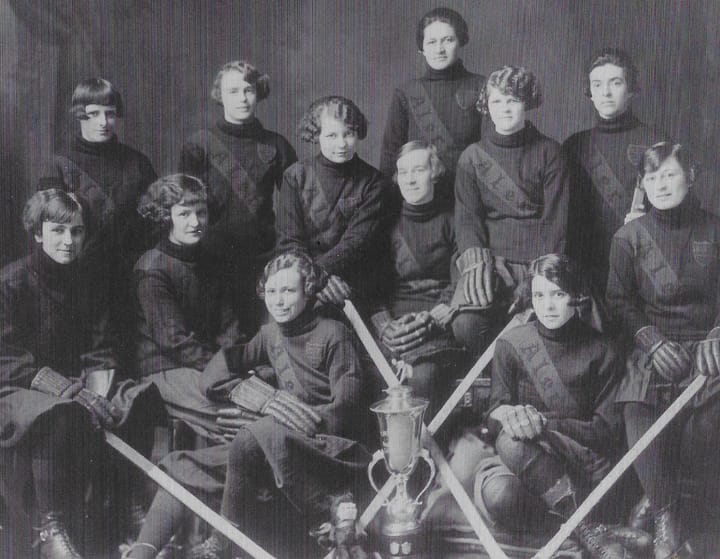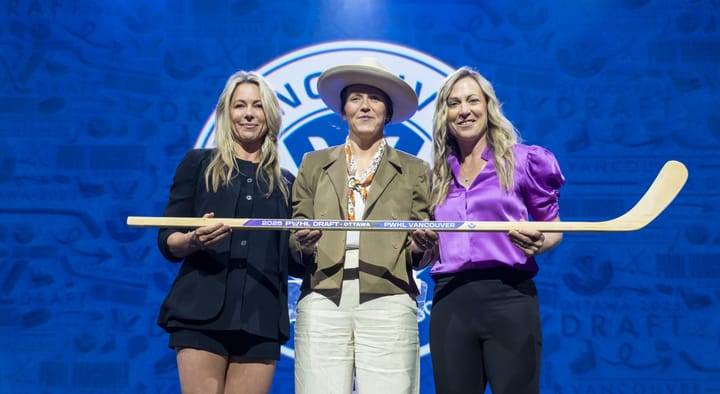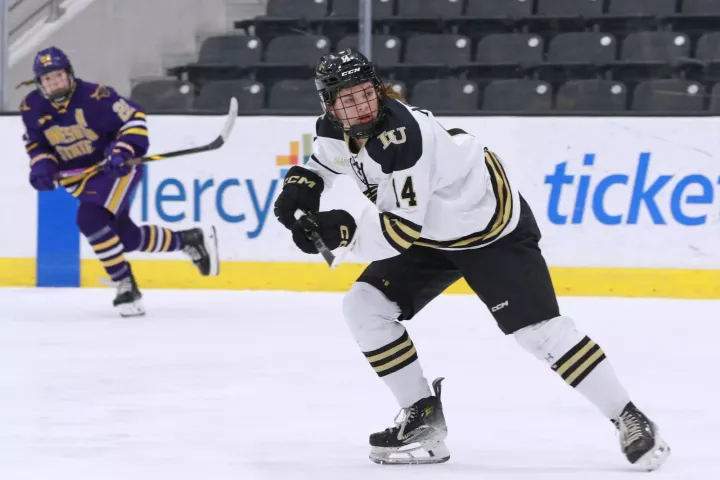Growing the game in a changing landscape
The CWHL folding leaves a lot of questions about what’s next for the players, teams, and the women’s hockey landscape
With the CWHL Board of Directors announcing that the league is ceasing operations on May 1, we’re seeing another sudden change in women’s hockey globally. How does this move fit in (or not) with the growth the game has seen over the years, and what are the greater implications moving forward?
Growth in the Game
Every year, there is tangible growth in women’s hockey, and we hear the mantra to #GrowtheGame from nearly all stakeholders. According to the IIHF’s Survey of Players, there were 88,500 registered female players in Canada in 2017-18; globally, the game has seen an increase in participation of 17.64 percent over the last eight years. When the IIHF Women’s World Championship gets going later this week in Espoo, Finland, we’ll see a field of 10 teams for the very first time, compared to eight.
Professionally, too, more opportunities have arisen for women’s players in North America. The CWHL itself expanded to China two seasons ago. The National Women’s Hockey League (NWHL) began operations four seasons ago, with four teams and expanded to Minnesota this season, adding the Whitecaps as the league’s fifth team.
Even just this season, the CWHL saw some tangible reasons to be optimistic about the future. On March 24, 175,000 viewers tuned in to see the Clarkson Cup final, which the Calgary Inferno won over Les Canadiennes. The game was broadcast on Sportsnet, and for the very first time, it was also broadcast in French on TVA Sports, and in the United States on NHL Network.
Even competing with the NWHL, the league was still able to bring quality international talent to its ranks. Three-time Olympian Venla Hovi became the first Finnish player to win the Clarkson Cup with Calgary. Japanese national team members Sena Suzuki and Aina Mizukami found homes in the CWHL, as did U.S. Olympians Brianna Decker, Kacey Bellamy, Alex Rigsby, Hilary Knight, Megan Bozek and Alex Carpenter, and Finnish Olympic goaltender Noora Räty. Fellow Finnish Olympian Annina Rajahuhta played some games in the CWHL last season.
All of this is to say, while the financial aspect of running a women’s hockey league is difficult and taxing, it feels strange that the Board of Directors would decide now is the time to fold. But the North American women’s hockey landscape has changed rapidly in recent years, and the effects of those changes are still being fully realized.
A Changing Landscape
There are obvious comparisons to make between the CWHL folding and the University of North Dakota shuttering its women’s hockey program two years ago (for me, anyway). UND was a competitive team that regularly ranked in the top-10, brought in a good number of fans compared to the national average, and recruited top talent from all over the world. The team being cut was also a notable setback during a time of growth for U.S. college hockey in general (which still continues, as new programs are joining Division I and accomplishing firsts each and every year).
The growth of the international game also (very quickly) widened the CWHL’s reach to China. In 2017-18, there were two CWHL teams based there: the Kunlun Red Star and the Vanke Rays. During the 2018 offseason, though, the Vanke Rays were folded and combined with the Kunlun Red Star as the new Shenzhen KRS Vanke Rays, which competed this year. There were also some concerns about parity in the CWHL, mainly with the Worcester Blades, who did not win a single game this season. Some shifts happened there, too; the team had previously been based in Boston but moved to Worcester, though the move didn’t pay off immediately in terms of on-ice results.
Probably the biggest takeaway from all of this: any kind of straightforward progression in women’s hockey is nearly impossible. Progress is made in some areas and then there are setbacks in others. You can’t just draw a straight line upwards. The CWHL started paying its players and saw a major investment in China; it folded a team and moved another; it had a record number of viewers tune in for the championship; now, operations are ceased for the entire league.
On the surface, and from what we know today, this is all as simple as the Board of Directors no longer seeing the CWHL as a viable venture. In this super enlightening Q&A with Liz Knox, also for The Ice Garden, Knox said that it feels like the league has been in a little bit of a “hamster wheel”, and asked “How many more years do you want to spend just surviving it?”
No matter what the exact reason is, or what is ahead of us now, it’s very clear that the women’s hockey landscape has shifted once again. At this point, there’s a gap in opportunities for Canadian-based players. The folding affects everyone who was playing in the CWHL and planning on joining, as well as Hockey Canada’s women’s program, which relied heavily on the CWHL as a place of development for its players.
This shift might end up being for the best; that gap might be filled quickly, in time for Canadian teams to be up and running again for the 2019-20 season. But this is still a somber day for women’s hockey in general, and every player, coach, and staff member who has ever been a part of the CWHL. In sports, we do everything with the understanding that something is going to come after us. We are a part of something bigger than just ourselves, the game we’re currently playing in, or the season we’re currently fighting for.
We know that we are contributing to a legacy, and that legacy will remain even when we are no longer on the ice, or behind the bench, or running things behind the scenes. This is at the very heart of why we do what we do. The league folding does not take anything away from that legacy, but in the knowledge that it won’t be furthered as we know it, there is an aching that can’t be described.
A legacy still undoubtedly remains for the league; but those involved with the CWHL are left wondering who will carry it forward, and how it fits into an evolving women’s hockey landscape.





Comments ()